Light-pollution: an often forgotten side-effect of our industrialized civilization

Even pristine landscapes around urbanized areas are affected
Even pristine landscapes around urbanized areas are affected
A new and very extensive study on light pollution titled “The new world atlas of artificial night sky brightness” was published recently by a group of scientists from Italy, Germany, USA and Israel. The results were presented via detailed maps of artificial sky luminance, with the help of high-resolution satellite data, light pollution propagation software and new precision sky brightness measurements.
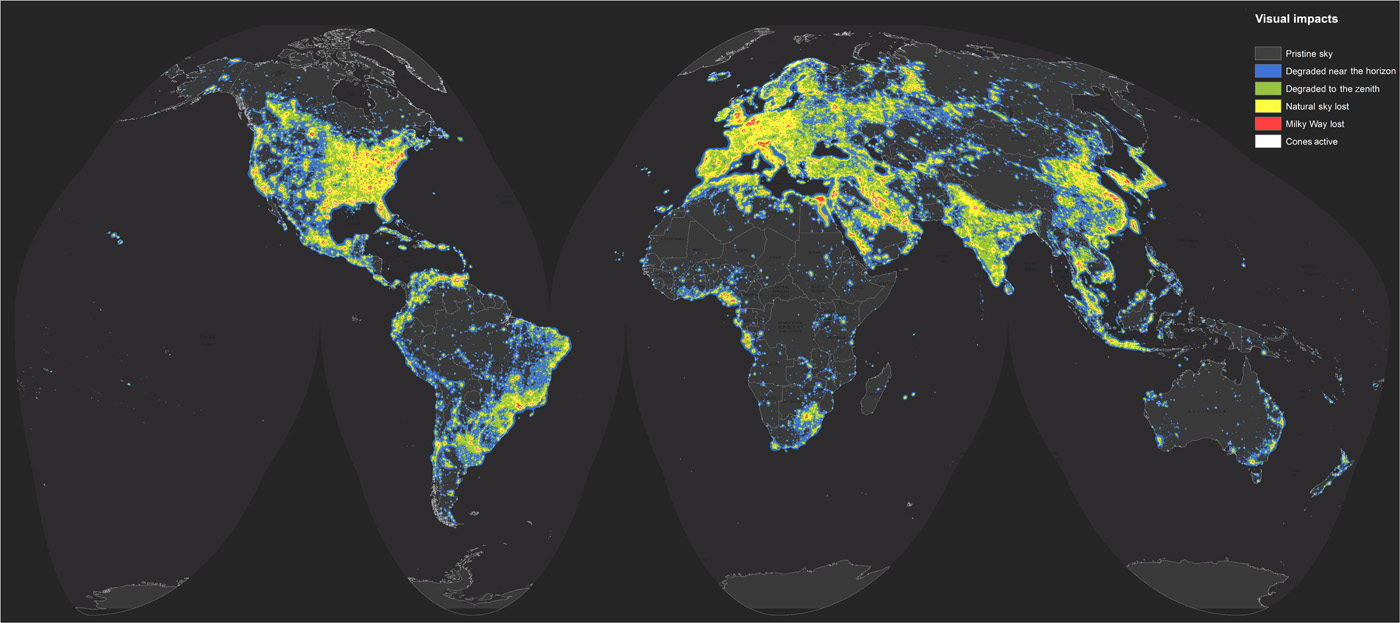
World map of artificial sky brightness. The map shows, in twofold increasing steps, the artificial sky brightness as a ratio to the natural sky brightness (assumed to be 174 μcd/m2). Fabio Falchi et al., 2016
Even though light pollution has received relatively little attention from environmental scientists in the past, it is considered to be one of the most pervasive forms of environmental alteration. It is also impressive that it can be observed hundreds of kilometers from its source (for example the light domes of Las Vegas and Los Angeles can be seen from the Death Valley National Park). However, apart from global ecological consequences, light pollution poses health issues, may even have an impact on human culture and of course wastes energy and money.
The charts below depict the 40 countries whose population is the most and least affected by the artificial sky brightness. The most light-polluted country is Singapore, where the entire population lives under skies so bright that the eye cannot fully dark-adapt to night vision. Other populations experiencing this level of light pollution are Kuwait (98%), Qatar (97%), United Arab Emirates (93%), Saudi Arabia (83%), South Korea (66%), Israel (61%), Argentina (58%), Libya (53%), and Trinidad and Tobago (50%); all of these countries have more than half of their inhabitants living under extremely bright skies.
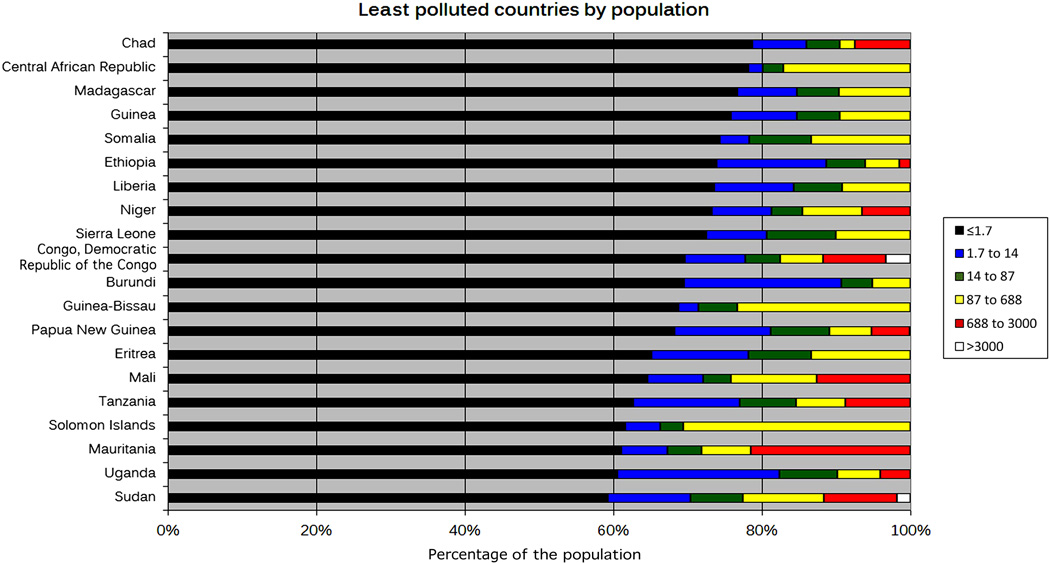
Countries whose populations are exposed to the least light pollution. Color ranges are shown on the right and indicate the pollution level (μcd/m2). Fabio Falchi et al., 2016
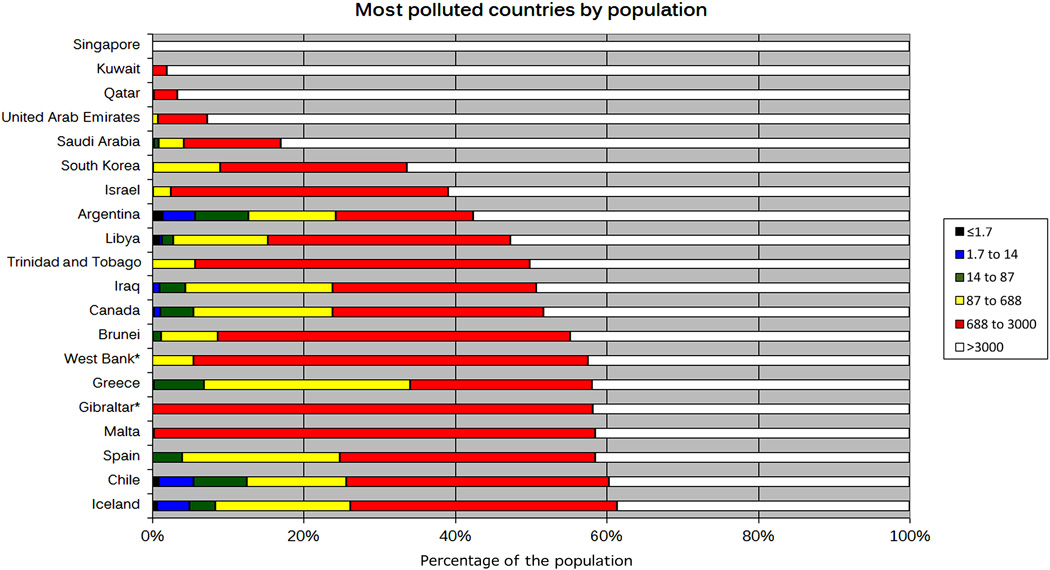
Countries whose populations are most exposed to light pollution. Color ranges are shown on the right and indicate the pollution level (μcd/m2). Fabio Falchi et al., 2016
The overall statistics
More than 80% of the world and more than 99% of the U.S. and European populations live under light-polluted skies. The Milky Way is hidden from more than one-third of humanity, including 60% of Europeans and nearly 80% of North Americans
Action to be taken
Some of the measures to be taken in order to lower light pollution: the full shielding of lights (not allowing luminaires to directly send any light at and above the horizon or outside the area to be lit), the use of the minimum light for the task, turning off lights when they are not needed, reducing the total installed flux and the limitation of the “blue” light that interferes with circadian rhythms and scotopic vision.
Want to read more like this story?
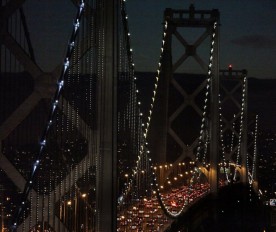
$4 Million Needed to Save Bay Lights on Bay Bridge
Oct, 24, 2014 | NewsThe creators of the Bay Bridge’s “Bay Lights” have until the end of the year to raise $4 million to...
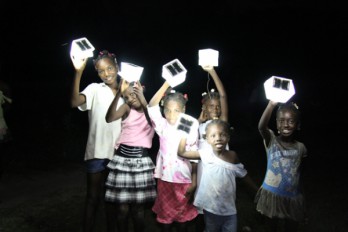
Origami-inspired solar light for off-grid and emergency use
Jan, 30, 2017 | NewsA portable source of clean, sustainable light A portable source of clean, sustainable light Hait...

This innovative lamp generates light from the lift of a weight
Apr, 02, 2018 | NewsNo electricity, batteries or sunlight is needed! No electricity, batteries or sunlight is needed!Gr...

What the new ‘Air Quality Atlas for Europe’ reveals
Feb, 05, 2018 | NewsThe sources and levels of air pollution in Europe have been mapped The sources and levels of air po...

Indoor pollution: a widely overlooked problem
May, 10, 2016 | NewsScientists propose the use of real-time sensors of indoor air-quality for the battle against the Sic...
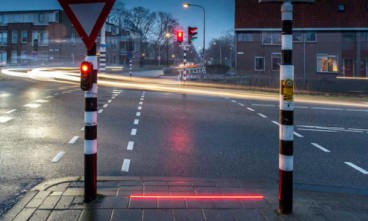
Traffic lights on pavements to alert distracted smartphone users
Mar, 13, 2017 | NewsThe project aims to increase pedestrian safety at major junctions The project aims to increase pe...

New insights about the seismic hazard of New Madrid area, Missouri
Nov, 22, 2018 | NewsScientists have attempted to shed light on the earthquake vulnerability of the area around New Madri...

China is winning the fight against air pollution
Mar, 30, 2018 | NewsIf the trend continues, the average Chinese citizen will see their life expectancy increase by 2.4 y...

China tests first driverless sky train
May, 09, 2023 | NewsChina’s first driverless sky train had its first trial run on May 9, in Wuhan’s hi-tech park. This...
Trending

Vertical gardens in Mexico City to combat pollution

Saudi Park Closed After 360 Big Pendulum Ride Crashes to Ground, 23 injured

Characteristics of Load Bearing Masonry Construction

Taipei 101’s impressive tuned mass damper

Dutch greenhouses have revolutionized modern farming

Federal court rules Biden’s offshore drilling ban unlawful


